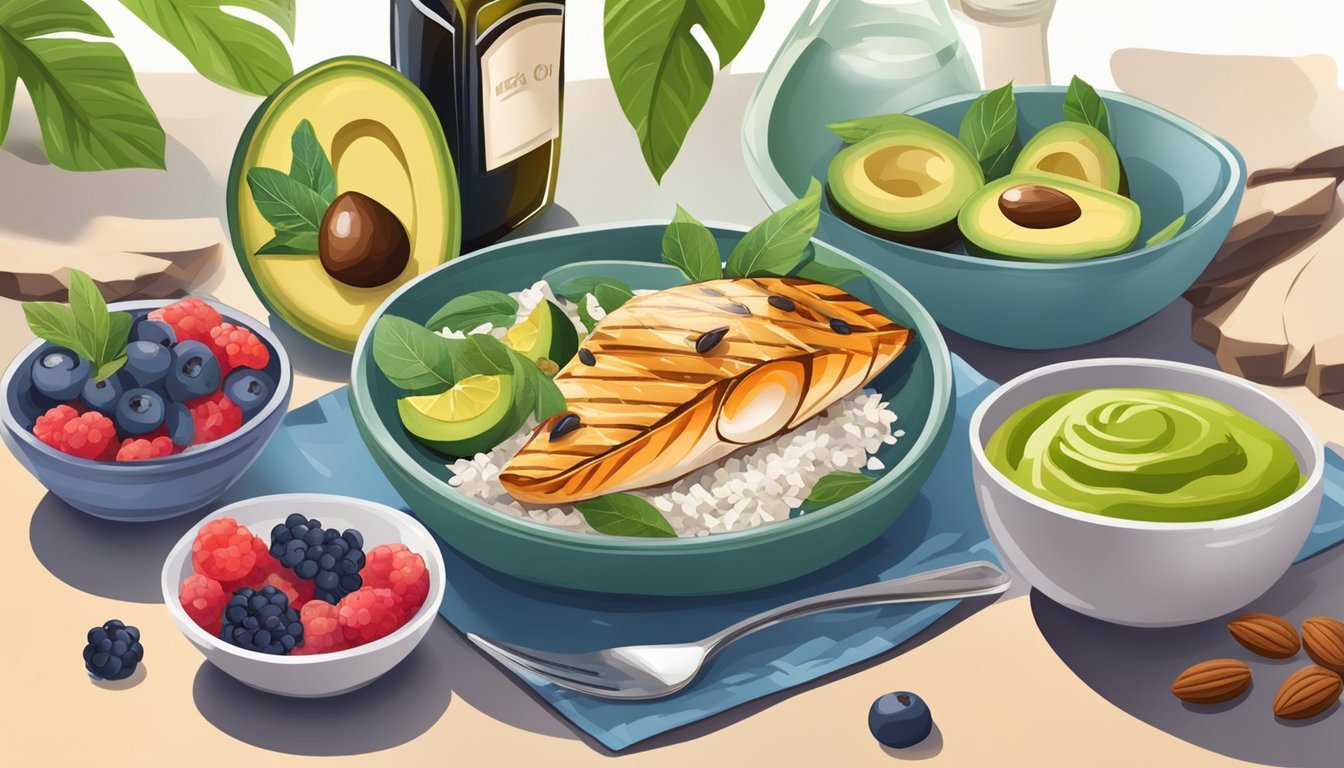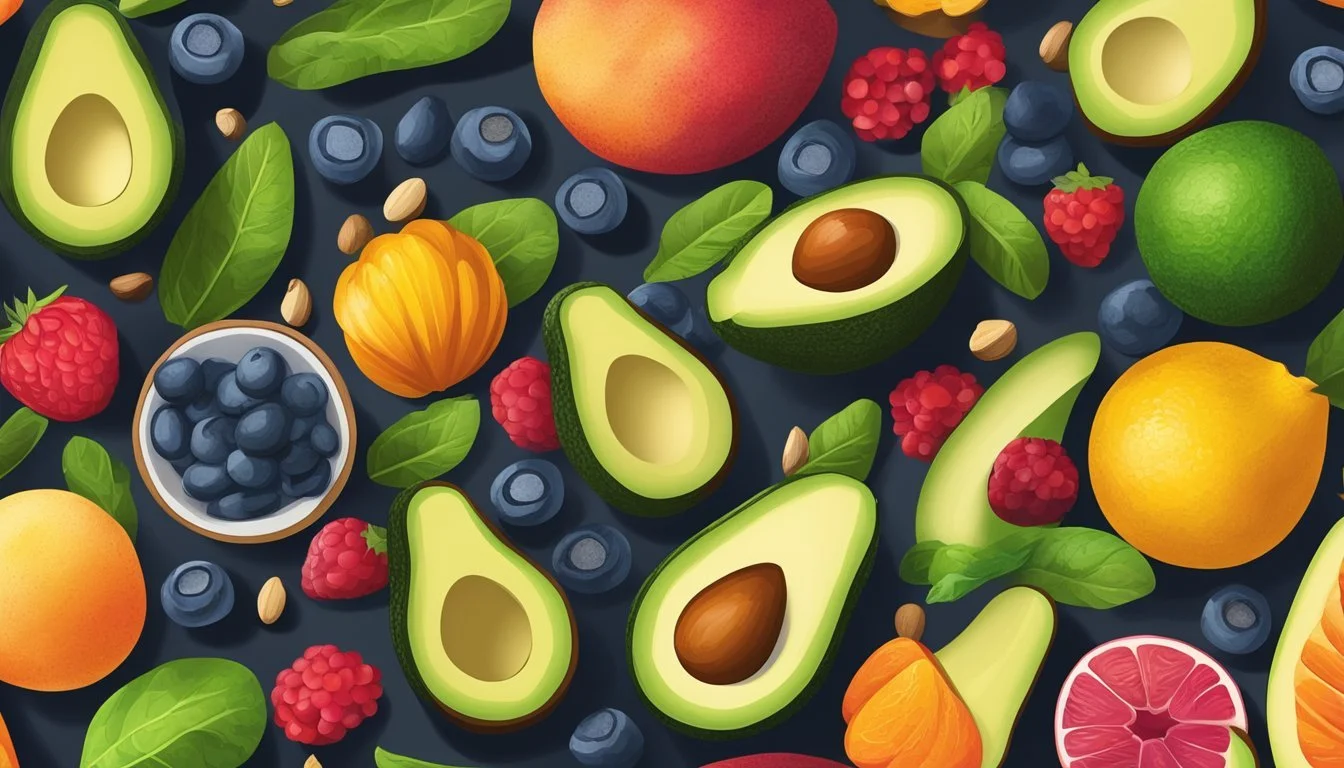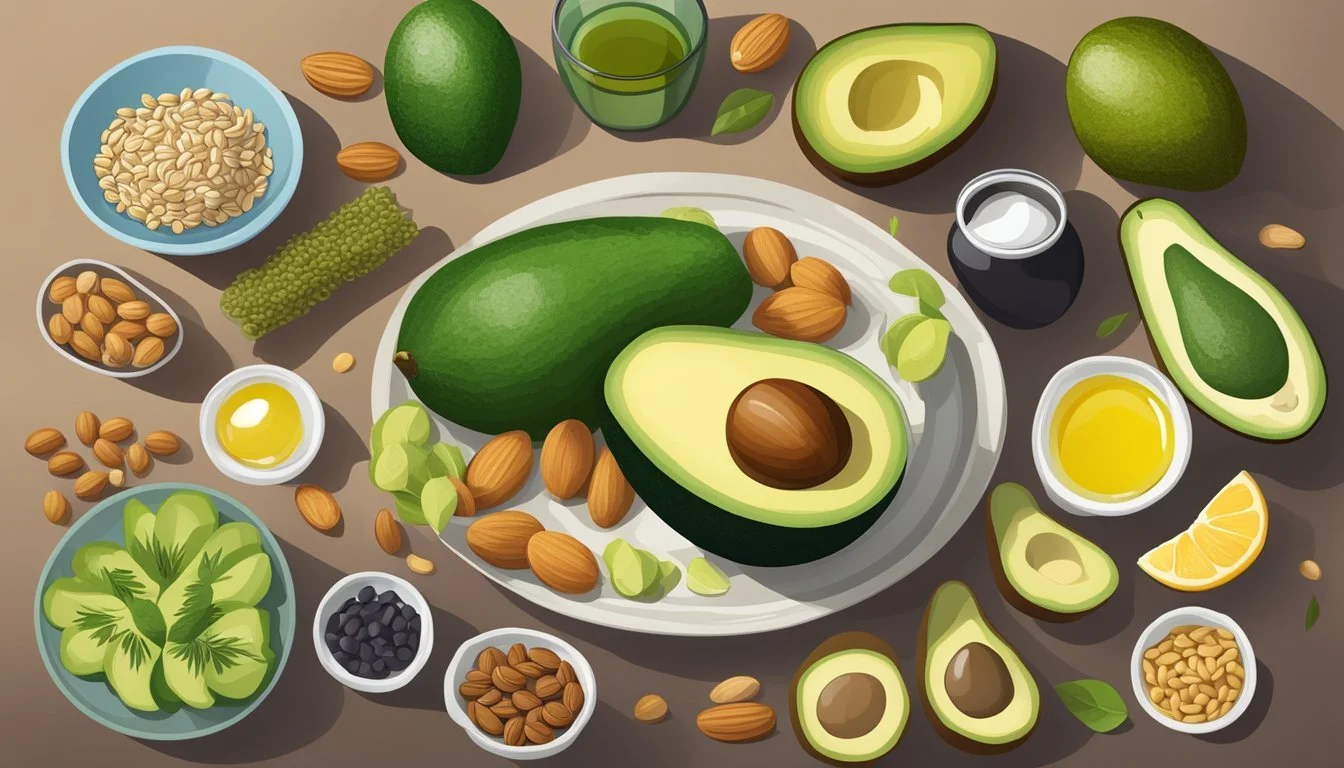How to Incorporate More Healthy Fats into Your Grain-Free Diet
Essential Tips for Balanced Eating
In a grain-free diet, the exclusion of wheat, barley, and other grains can lead to questions about where to find macronutrients such as healthy fats. Fortunately, there are a variety of nutrient-dense foods that can supplement a grain-free eating plan with the necessary fats. Healthy fats are essential for absorbing vitamins, providing energy, and supporting cell growth. They come in different forms, such as monounsaturated and polyunsaturated fats, which are found in plant-based oils, seeds, nuts (What wine goes well with nuts?), and certain fish. Including these fats in daily meals can benefit overall health, contribute to satiety, and support weight management.
Incorporating healthy fats into a grain-free diet can be both simple and delicious. Knowing the right sources can make a significant difference to one's dietary pattern. Seeds like chia, flax, and pumpkin are not only rich in healthy fats but also offer fiber and protein, making them excellent additions to salads, smoothies, and snacks. Owing to their versatility and health benefits, seeds can easily become a staple in a grain-free diet. Other sources, such as lean meats, specific types of fish, and high-fat dairy products like cheese and yogurt can also contribute to daily fat intake while adding satisfying flavors and textures to meals.
Understanding the benefits and sources of healthy fats helps in effectively integrating them into a grain-free diet. It's a balanced approach that ensures the body still receives important nutrients while adhering to dietary restrictions. Individuals who follow a grain-free lifestyle can enjoy a variety of foods that not only enhance their meals but also support their health goals.
Incorporating more healthy fats into your grain-free diet can be a delightful and health-conscious way to enhance your meals while supporting overall well-being. When navigating grain-free weight loss plateaus, embracing healthy fats from sources such as avocados, nuts, and seeds can provide essential nutrients and promote a balanced approach to nutrition.
Exploring creative recipes such as grain-free tortillas tacos and incorporating healthy fats into grain-free condiments dressings can offer flavorful and satisfying options while promoting a well-rounded dietary approach. Moreover, understanding the role of carbohydrates in a grain-free regimen can provide insight into optimizing the intake of healthy fats for sustained energy and satisfaction.
Incorporating healthy fats into your diet can also have a positive impact on grain-free skin hair health, further enhancing the benefits of a grain-free diet. Additionally, when considering grain-free traveling, planning ahead for nutritious options rich in healthy fats, such as seasonal vegetables, can help maintain your dietary regimen while on the go.
By embracing the benefits of healthy fats and incorporating them into your grain-free diet, you can savor delicious and nourishing meals that support your overall well-being.
Understanding Healthy Fats and Grain-Free Diets
When adopting a grain-free diet, individuals remove foods containing grains, and thus, gluten, which can benefit those with specific health conditions or dietary preferences. The focus shifts towards other nutrient sources, predominantly proteins, healthy fats, and alternative carbohydrates. It's crucial to understand how to replace the nutrients grains usually provide, especially since grains can be a significant source of vitamins and fiber.
Healthy fats are essential for nutrition and can be found in a variety of foods that complement a grain-free diet. They play a vital role in absorbing fat-soluble vitamins and providing a concentrated source of energy. There are several types of fats, but the emphasis on healthy eating is obtaining monounsaturated and polyunsaturated fats.
Here are some key sources of healthy fats:
Avocados (how long does avocado last?)
Nuts and Seeds (e.g., almonds, chia seeds, flax seeds)
Oils (e.g., olive oil, coconut oil)
Fish and Seafood (rich in omega-3 fatty acids)
It's also important to moderate the intake of saturated fats, which should comprise a small percentage of the total calorie intake, as they can impact heart health if consumed in excess.
Proteins from meat, fish, and plant-based alternatives like tofu become more central in a grain-free regime, contributing to the overall protein requirement. By incorporating a variety of these foods, individuals can ensure they receive the full spectrum of essential fatty acids, vitamins, and other nutrients for a balanced nutrition profile.
In summary, replacing grains with a diverse selection of foods rich in healthy fats and proteins creates a solid nutritional foundation and supports overall wellbeing.
Identifying Healthy Fat Sources
In a grain-free diet, it's crucial to focus on including a variety of healthy fats to ensure a balanced intake of nutrients. Below are key sources of healthy fats that can be easily incorporated into your daily regimen.
Nuts and Seeds
Nuts and seeds are powerhouses of nutrients, offering a substantial amount of healthy fats along with fiber and protein. Notable examples include:
Almonds: Loaded with monounsaturated fats which can help in maintaining heart health.
Walnuts: Rich in omega-3 fatty acids, beneficial for brain function.
Chia seeds: Just 2 tablespoons provide 9 grams of healthy fat.
Flax seeds: A similar 2-tablespoon serving garners around 10 grams of fats.
Pumpkin seeds: Around 5 teaspoons offer 10 grams of fats, making them an excellent source to sprinkle onto meals.
Fruits and Vegetables
Certain fruits and vegetables are surprisingly good sources of healthy fats:
Avocado: Full of monounsaturated fats, perfect for using as a spread or in salads.
Olives: and olive oil: A primary source of healthy fats, ideal for dressings or to drizzle over dishes for added flavor and nutrients.
Including these in regular meals can significantly enhance the fat quality in one's diet.
Meat, Fish, and Eggs
Including lean meats, fish, and eggs can provide not only high-quality protein but also important fats:
Fish: Especially fatty varieties like salmon, mackerel, and sardines are rich in omega-3 fatty acids.
Eggs: Contain essential fatty acids and are particularly versatile in a grain-free diet.
Meat: Opting for grass-fed meats can ensure higher levels of omega-3 fats compared to grain-fed alternatives.
Replacing Grains Without Compromising on Taste
When adopting a grain-free diet, one can still enjoy a variety of flavorful foods by selecting the right grain alternatives and understanding how to cook with them.
Understanding Grain Alternatives
In a grain-free diet, the goal is to find substitutes that mimic the texture and flavor of grains without including wheat, corn, or other traditional cereals. Notable alternatives include:
Quinoa: It's a complete protein and a fantastic replacement for rice or couscous (What wine goes well with couscous?).
Amaranth: Similar to millet in size, amaranth can be used in cereals and baked goods.
Buckwheat: Despite its name, it's not related to wheat and is great in pancakes and noodles.
Almond Flour: This flour is high in healthy fats, ideal for baking, and has a mild, nutty flavor.
Coconut Flour: Rich in fiber and low in carbohydrates, coconut flour is suitable for baking and thickening.
Nuts like almonds and walnuts are also prominent in grain-free diets for their healthy fat content and crunch that can substitute for grains' texture.
Cooking and Baking with Grain Alternatives
Cooking with grain alternatives requires some adjustments to traditional methods to achieve the best results:
When using almond flour, it’s crucial to increase egg or binding agent quantities since this flour lacks the gluten that provides structure in wheat-based recipes.
Coconut flour is highly absorbent, so liquid ratios should be higher in recipes—about 1 cup of coconut flour typically requires 6 eggs and a cup of liquid.
To retain moisture and avoid a dry texture in baked goods, combining grain-free flours can be beneficial.
For savory dishes:
Quinoa and amaranth can be boiled in water or broth until they become fluffy, much like one would prepare rice.
Buckwheat is often toasted before cooking to enhance its inherent nutty flavor.
With these tips, it's possible to create grain-free meals that are not only healthy but delicious and satisfying as well.
Strategies for Incorporating Healthy Fats
Incorporating healthy fats into a grain-free diet enhances both the nutritional value and taste of meals. With careful meal planning and innovative recipes, individuals can ensure they receive the essential fatty acids necessary for optimal health.
Meal Planning and Preparation
To seamlessly integrate healthy fats into a grain-free diet, one should consider their meal structure and ingredient selection.
Strategize Your Shopping List: Prioritize purchasing whole foods such as avocados, nuts, seeds, and high-quality oils.
Prepare in Advance: Allocate time to pre-soak nuts and prepare homemade dressings using oils like olive or avocado oil.
Cooking Techniques: When cooking, utilize methods like sautéing with coconut oil or roasting vegetables in olive oil to add both flavor and nutrition.
Creative Recipes and Ideas
Creativity in the kitchen allows for enjoyable incorporation of healthy fats into a grain-free diet.
Smoothie Additions:
Add 1 tablespoon of chia or flax seeds to smoothies for a boost in omega-3 fatty acids.
Incorporate a slice of avocado or a spoonful of almond butter for a creamy texture and healthy fats.
Baking Alternatives:
Use almond flour or coconut flour in place of grain flours for baking.
Try adding nuts or seeds to grain-free muffins for added healthy fats and protein.
Snack Options:
Handful of nuts or seeds can be a quick and nutritious snack.
Prepare vegetables like celery or bell peppers to dip in nut butters or homemade guacamole.
Each of these suggestions not only adds essential fats to the diet but also can enhance the intake of fiber and protein, making meals more satisfying and nutritionally balanced without relying on grains.
Benefits of Healthy Fats in a Grain-Free Diet
Incorporating healthy fats into a grain-free diet offers a multitude of health advantages. These fats are essential for reducing inflammation, which is pivotal for individuals with celiac disease or gluten sensitivity. By dampening inflammatory processes, healthy fats can aid in mitigating discomfort and potentially lower the risk of chronic conditions.
Heart health is profoundly impacted by the inclusion of healthy fats. These fats contribute to a balanced lipid profile by managing cholesterol and triglyceride levels, which is vital in the prevention of heart disease. Their role in maintaining blood sugar is also significant, especially for those with diabetes, as they can help stabilize glucose levels and prevent spikes that are detrimental to diabetic health.
For proponents of grain-free diets, who often exclude grains to manage symptoms of non-celiac gluten sensitivity, inflammation, or autoimmune diseases, healthy fats are particularly important. They contribute to weight loss efforts by enhancing satiety, thus preventing overeating. They may also provide mental health benefits by potentially alleviating symptoms of depression and anxiety.
To conclude, the role of healthy fats in a grain-free diet is quite multifaceted and extends beyond the mere provision of energy. They are instrumental in promoting overall well-being while adhering to dietary restrictions necessary for managing specific health conditions.
Addressing Common Challenges
Incorporating healthy fats into a grain-free diet can be challenging when managing dietary restrictions and striving for nutritional balance. This section addresses those concerns with specific strategies.
Dealing with Dietary Restrictions
Individuals with celiac disease or gluten intolerance can face difficulties when grains, a common source of fats, are off the table. For a gluten-free and grain-free diet rich in healthy fats, they can turn to:
Seeds: Chia or flax seeds are excellent fat sources; one can add them to non-dairy yogurts or homemade salad dressings.
Nuts: Almonds and walnuts can be consumed as snacks or blended into smoothies.
Those on paleo or keto diets, which often eliminate grains and sugars, might include:
Avocado: A versatile fruit rich in monounsaturated fats.
Coconut oil: Ideal for cooking and baking, as it fits within the paleo and keto parameters.
For those with dairy restrictions or lactose intolerance, one can opt for dairy-free alternatives such as almond or coconut milk which are often enriched with healthy fats.
Finding Balance and Moderation
Even when following specific diets such as keto or paleo, it is crucial to maintain a balance between omega-3 and omega-6 fatty acids. Moderation is key in preventing inflammation, which can exacerbate conditions like autoimmune diseases or IBS (Irritable Bowel Syndrome), and maintain proper digestion.
Fatty fish like:
Salmon: Rich in omega-3 fatty acids, one serving per week can be beneficial.
Tuna: Also high in omega-3s, which can be added to salads.
Plant oils may also be useful:
Olive oil: Can be used for salad dressings or low-heat cooking.
Flaxseed oil: Contains significant amounts of omega-3s; integrating it into diet through cold dishes can preserve its health benefits.
Nutritional Considerations and Tips
Incorporating healthy fats into a grain-free diet requires careful consideration of nutritional balance, particularly when it comes to ensuring adequate intake of vitamins, minerals, and fiber which might otherwise be sourced from grains. To maintain a well-rounded diet, one should focus on the following tips.
When grains are off the table, seeds can be powerful allies. They are rich in minerals like magnesium and manganese, essential for enzyme function and bone health, respectively. They are also good sources of B vitamins, fiber, and healthy fats. For instance:
Chia seeds provide about 9 grams of fat per ounce, and are also high in fiber and iron.
Flax seeds contribute to 10 grams of fat per ounce and are rich in omega-3 fatty acids.
Nuts are another nutrient-dense option, packed with selenium, magnesium, and healthy fats. Almonds, for instance, offer a good supply of magnesium and vitamin E.
Avocado is an excellent source of monounsaturated fats and provides vitamins and minerals such as potassium.
For cooking, oils like olive oil are staples in a grain-free diet, adding not just flavor but essential fatty acids which are important for heart health.
Lastly, it's crucial to consider the Recommended Dietary Allowances (RDAs) to ensure all nutrient needs are met. Consulting a nutrition professional can help tailor a plan specific to individual requirements.
Table: Nutrient Sources in a Grain-Free Diet
Nutrient Sources Magnesium Almonds, spinach, chia seeds B Vitamins Nuts, seeds, avocados Fiber Chia seeds, flax seeds Iron Pumpkin seeds, nuts Selenium Brazil nuts, sunflower seeds Healthy Fats Olive oil, avocados, nuts and seeds
By focusing on a variety of seeds, nuts, healthy oils, and other nutrient-dense foods, one can ensure that even without grains, their diet can be rich in essential nutrients.
The Role of Healthy Fats in Managing Conditions
Healthy fats play a crucial role in managing various health conditions. They are fundamental in a grain-free diet, particularly for those dealing with celiac disease and non-celiac gluten sensitivity, where the absence of gluten-containing grains is essential.
Heart Disease and Stroke: A diet rich in monounsaturated and polyunsaturated fats, particularly omega-3 fatty acids, can improve heart health. These fats may lower bad LDL cholesterol and increase good HDL cholesterol, reducing the risk of heart disease and stroke.
Fats to Include Effects on Conditions Olive Oil Lowers cholesterol Avocado Reduces triglyceride levels Nuts and Seeds Lowers risk of heart disease
Diabetes and Blood Sugar: For individuals with diabetes, controlling blood sugar levels is paramount. Healthy fats have a minimal effect on glycemic index, meaning they do not cause spikes in blood sugar levels, making them beneficial for maintaining stable glucose levels.
Celiac Disease and Gluten Sensitivity: Those with celiac disease or non-celiac gluten sensitivity may find that incorporating healthy fats into their diet can help reduce inflammation associated with these conditions.
Mental Health: There is an emerging body of research suggesting that omega-3 fatty acids may play a role in managing anxiety and depression. These fats help compose brain cell membranes and exert anti-inflammatory actions, which may support mental well-being.
By focusing on healthy fat intake, one may manage and potentially prevent certain conditions while adhering to a grain-free diet. It is essential, however, to remember that the overall diet and lifestyle should be considered in a holistic approach to health.
Frequently Asked Questions
In this section, readers will gain clarity on how to differentiate between healthy and unhealthy fats, as well as how to navigate a grain-free diet while maintaining adequate fat intake.
Distinguishing Between Fats
When one adopts a grain-free diet, it becomes particularly important to distinguish the types of fats they consume. Healthy fats, such as monounsaturated and polyunsaturated fats, can be found in:
Nuts: Almonds, walnuts, and pistachios
Seeds: Chia seeds (1 oz provides 9g of fat), flax seeds (1 oz yields 10g of fat), and pumpkin seeds
Oils: Olive oil, avocado oil, and coconut oil
These fats contribute to heart health and are crucial for overall well-being, unlike saturated and trans fats which one should aim to minimize.
Addressing Grain-Free Concerns
Individuals often worry about nutrient deficiencies when eliminating whole grains, as grains like wheat, barley, rye, spelt, and oats are common sources of dietary fibers and nutrients. To navigate a grain-free diet, which might be essential for those with celiac disease or for personal dietary choices like keto or paleo, one should consider the following food groups:
Meat and Fish: A rich source of omega-3 fatty acids, particularly in fatty fish
Dairy Products: Cheese and yogurt can offer both protein and fat
Legumes: Including beans in the diet can provide both protein and fiber
Eggs: Highly nutritious and a good source of fats and proteins
Non-Grain Plants: Such as quinoa (often considered a seed) and buckwheat, which are gluten-free and can substitute traditional grains
Avoiding refined grains and processed foods is also key to a healthy grain-free diet, as they often contain unhealthy fats and added sugars. Focusing on whole, unprocessed foods ensures a richer intake of nutrients and healthy fats.




